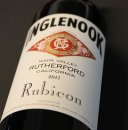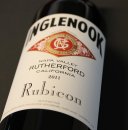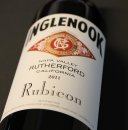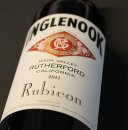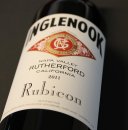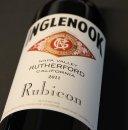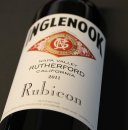Philip Togni Vineyard Cabernet Sauvignon
The Philip Togni estate vineyard is in the Spring Mountain District AVA, just northwest of the town of St. Helena on the western side of the Napa Valley. Sitting on the eastern slope of the Mayacamas Range, it’s the coolest and wettest region in the valley, partly due to its proximity to the Pacific Ocean (50 kilometres) and San Pablo Bay (40 kilometres). Conditions on Spring Mountain are further moderated by aspect and altitude; most of the region’s vineyards face east, avoiding the harsh afternoon sun, and the steep terrain can reach as high as 800 metres. The east-facing, organic, dry-farmed 10-hectare Togni plot lies high up on the mountain itself, above the fog line at just over 600 metres. Surrounded by oak trees and tall Douglas Firs, the site was first planted in 1981 to Cabernet Sauvignon and Sauvignon Blanc. Following a conversation with friend and Bordeaux legend Paul Pontallier, Togni decided to mirror the varietal plantings of Château Margaux at his own estate. The plantings now stand at 82% Cabernet Sauvignon and 15% Merlot, with the balance comprising Cabernet Franc (2%) and Petit Verdot (1%). The make-up of the wines reflects these plantings. It’s a steeply terraced site, home to old vines (33 years on average) in rocky soils of weathered sandstone and shale. Philip Togni Cabernet Sauvignon is made from estate fruit―the family has never purchased fruit, nor will they. “We know our site is special,” daughter Lisa explains. “We’re trying to make a wine that reflects this place.” In another tip of the cap to Bordeaux, Philip Togni’s preference from the outset has been to make wines more in the mould of Saint-Estèphe rather than Saint-Julien; in each given season, he and Lisa seek to emulate the longevity, rugged character and definition found in those wines. “That’s what we set out to do, and with a few tweaks, it seems as if that’s what we have achieved.” The 2018 season was a classic at this estate, producing elegant, detailed, site-true wines. The fruit was picked in the third week of September with potential alcohol between 13 and 14%. The grapes were sorted, gently destemmed, crushed, and cold soaked for three days. After 20 days’ co-fermenting, the wine was pressed to French oak (40% new Taransaud and Nadalie). The wine was bottled in August 2020.
Screaming Eagle Second Flight Cabernet Franc Cabernet Merlot
Screaming Eagle The Flight Cabernet Franc Cabernet Merlot
RUDD ESTATE Oakville Estate
An authentic expression of a unique place, the Rudd Oakville Estate Red transcends grape variety with a profound expression of vintage and site from mature vines in the Estates complementary terroirs of core stone volcanics and alluvial fan. Composed for ageability, harmony, finesse and longevity, the Rudd Oakville Estate Red is the pinnacle of what the Oakville Estate produces in each vintage.Deep in color with a hint of violet edges, the 2015 presents black cherry on the nose. With an elegant entry, the mouth is filled with supple tannins, yet the wine remains fluid and focused. An Estate blend that is dominated specifically by the vineyard lots originating from the Rudd Alluvial Fan, revealing elements of fresh acidity and dark fruit. The beauty of alluvial characteristics are complemented by the lots from the red, volcanic soils with the wine showing density and volume with notes of bramble, earth and iron rust.Blend: 94% Cabernet Sauvignon, 3% Cabernet Franc, 2% Petit Verdot, 1% Malbec.
Beaulieu Vineyard Cabernet Sauvignon Georges de Latour
The 2019 Cabernet Sauvignon Georges de Latour is an infant, but it is shaping up to be a real gem. The 2019 includes 9% Petit Verdot, the highest ever, an approach that works here in giving the wine tremendous aromatic presence and overall depth. A whole range of savory and earthy notes lends complexity to this powerhouse Georges de Latour. The 2019 is impressive, that much is evident. AG Vinous 97 Points
Napanook Cabernet Blend
NAPANOOK Cabernet Blend, Napa Valley The second wine of Napa Valley’s famed Dominus Estate, this wine is made solely from grapes grown at the historic Napanook Vineyard in Yountville, Napanook is blended from vineyard blocks carefully selected for their lively fruit, soft tannins, and early maturing characteristics. The wine is created to be consumed young and enjoyed with food, but will also age well for more than a decade. The vineyard is entirely dry-farmed, allowing the vines to draw deeply on the land’s unique geology. The viticulture and winemaking are undertaken meticulously, with the objective of producing wines that are pure, balanced, and complex. Minimal intervention and restraint throughout the process of grape berry selection, fermentation and ageing preserve the character of the fruit. The resulting wines, with a tremendous potential for ageing, convey the very personality of this historic vineyard.
Joseph Phelps Insignia Cabernet Blend
Quintessa, Cabernet Sauvignon, Napa Valley, Rutherford, California, USA,
Mayacamas Vineyards Cabernet Sauvignon
MAYACAMAS VINEYARDS Cabernet Sauvignon, Napa Valley Not much has changed by way of production since Bob Travers started the Mayacamas estate in the early 1940s. The fruit is handpicked early, often in early September - abvs usually end up between 13 and 14 percent to preserve natural, altitude derived acidities. Fermentations occur predominantly in open-top cement vessels which were built in the 1950s, again to preserve acidities and vibrant fruit character. Extended ageing occurs exclusively in neutral oak some as old as 100 years typically for three years which allows the vineyard's expression to shine through the powerful fruit profile, while also minimising oxygenation and helping to maintain the powerful and tight tannin structure Mayacamas is so famous for. The wines then usually spend a further two years in bottle before it is ready to be released to the market. Mayacamas make wines that lie in stark contrast to the more prevalent rich, heavily oaked, high in abv, bombastic wines that are common in the Napa Valley.












